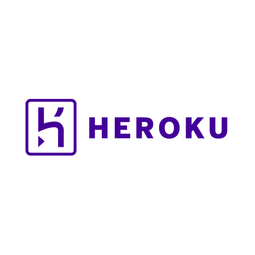Download PDF
Align Technology's Transition to Heroku for Enhanced Consumer App Experience

Technology Category
- Infrastructure as a Service (IaaS) - Cloud Databases
- Infrastructure as a Service (IaaS) - Cloud Middleware & Microservices
Applicable Industries
- Consumer Goods
- Electronics
Applicable Functions
- Maintenance
Use Cases
- Traffic Monitoring
The Challenge
Align Technology, a global medical device company, was facing challenges with its consumer-facing applications, including their corporate site and product sites. One of their key applications, the Invisalign Smile Assessment app, along with other applications, were used by thousands of consumers each month and required almost daily updates. These updates ranged from large iterations to minor changes on individual documents. The company found it increasingly difficult to perform these quick updates, a limitation that posed challenges not only for the business teams but also for their IT developers. The need for a more efficient and agile solution was evident.
The Customer
Align Technology, Inc.
About The Customer
Align Technology, Inc. is a global medical device company that specializes in the design, manufacture, and marketing of the Invisalign® system, the world's leading virtually invisible orthodontic product. They also offer 3D digital intraoral scanning products and services for orthodontic and restorative dentistry. Align runs a number of consumer-facing applications, including their corporate site and product sites. These applications are used by thousands of consumers each month and require frequent updates.
The Solution
In response to the challenge, Align Technology conducted a technology assessment, considering both Infrastructure-as-a-Service (IaaS) and Platform-as-a-Service (PaaS) solutions. They ultimately chose Heroku, a PaaS solution, over an IaaS solution for several reasons. Unlike IaaS solutions, which require a dedicated developer operations function, the Heroku platform is completely managed by the Heroku team. This meant that Align could focus their resources and energy on their apps, rather than on managing servers, upgrades, adding memory, and troubleshooting security issues. Additionally, Heroku allowed Align to leverage integrated third-party app components and services through the Heroku Add-ons ecosystem. This enabled developers at Align to quickly utilize more than 150 Add-ons, including databases, bug tracking, email automation, and other monitoring tools. Furthermore, Heroku offered fast scalability in response to heavy traffic or other issues.
Operational Impact
Quantitative Benefit
Related Case Studies.
.png)
Case Study
Improving Vending Machine Profitability with the Internet of Things (IoT)
The vending industry is undergoing a sea change, taking advantage of new technologies to go beyond just delivering snacks to creating a new retail location. Intelligent vending machines can be found in many public locations as well as company facilities, selling different types of goods and services, including even computer accessories, gold bars, tickets, and office supplies. With increasing sophistication, they may also provide time- and location-based data pertaining to sales, inventory, and customer preferences. But at the end of the day, vending machine operators know greater profitability is driven by higher sales and lower operating costs.

Case Study
Remote Temperature Monitoring of Perishable Goods Saves Money
RMONI was facing temperature monitoring challenges in a cold chain business. A cold chain must be established and maintained to ensure goods have been properly refrigerated during every step of the process, making temperature monitoring a critical business function. Manual registration practice can be very costly, labor intensive and prone to mistakes.

Case Study
Series Production with Lot-size-1 Flexibility
Nobilia manufactures customized fitted kitchens with a lot size of 1. They require maximum transparency of tracking design data and individual processing steps so that they can locate a particular piece of kitchen furniture in the sequence of processes.








